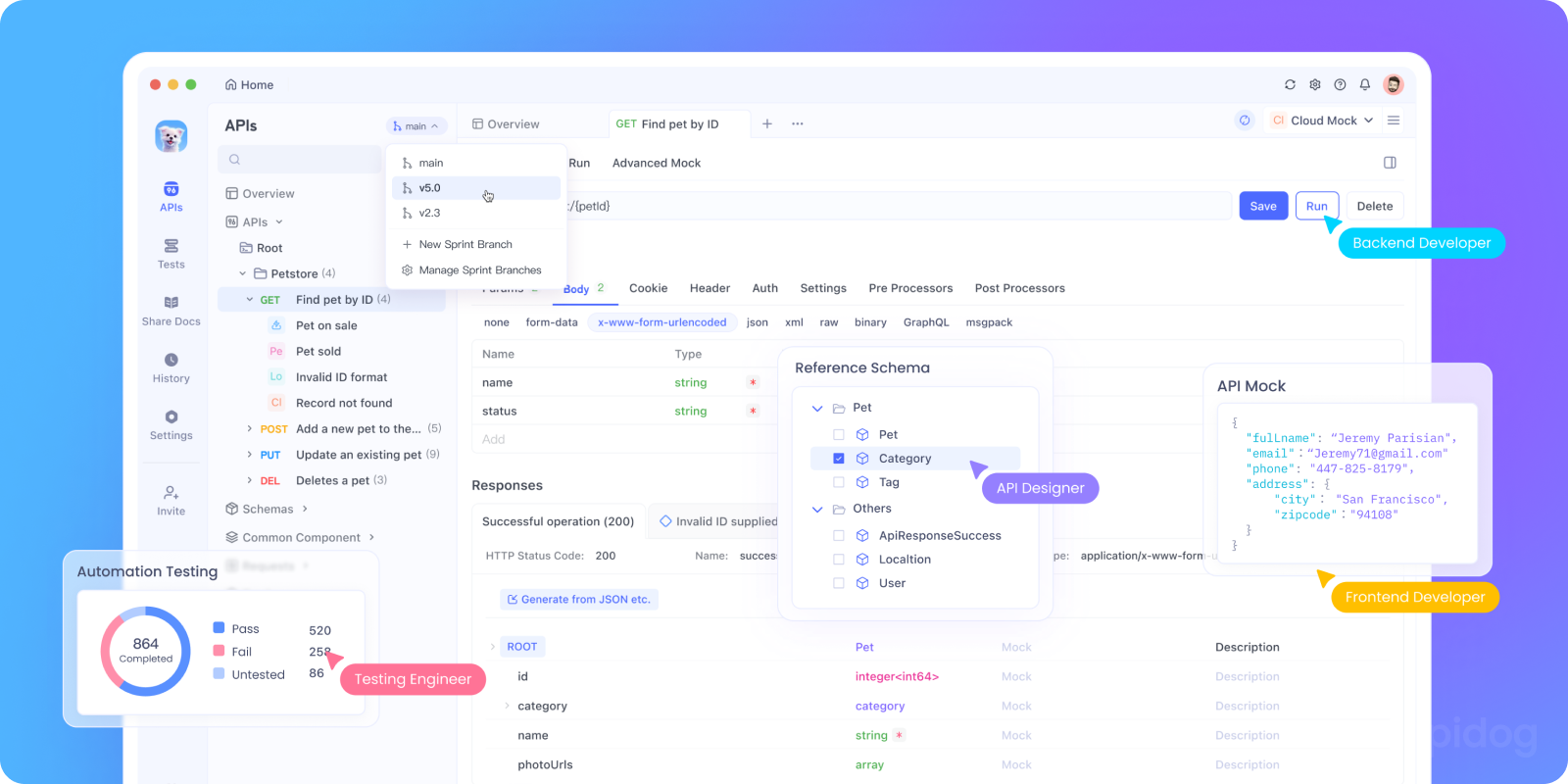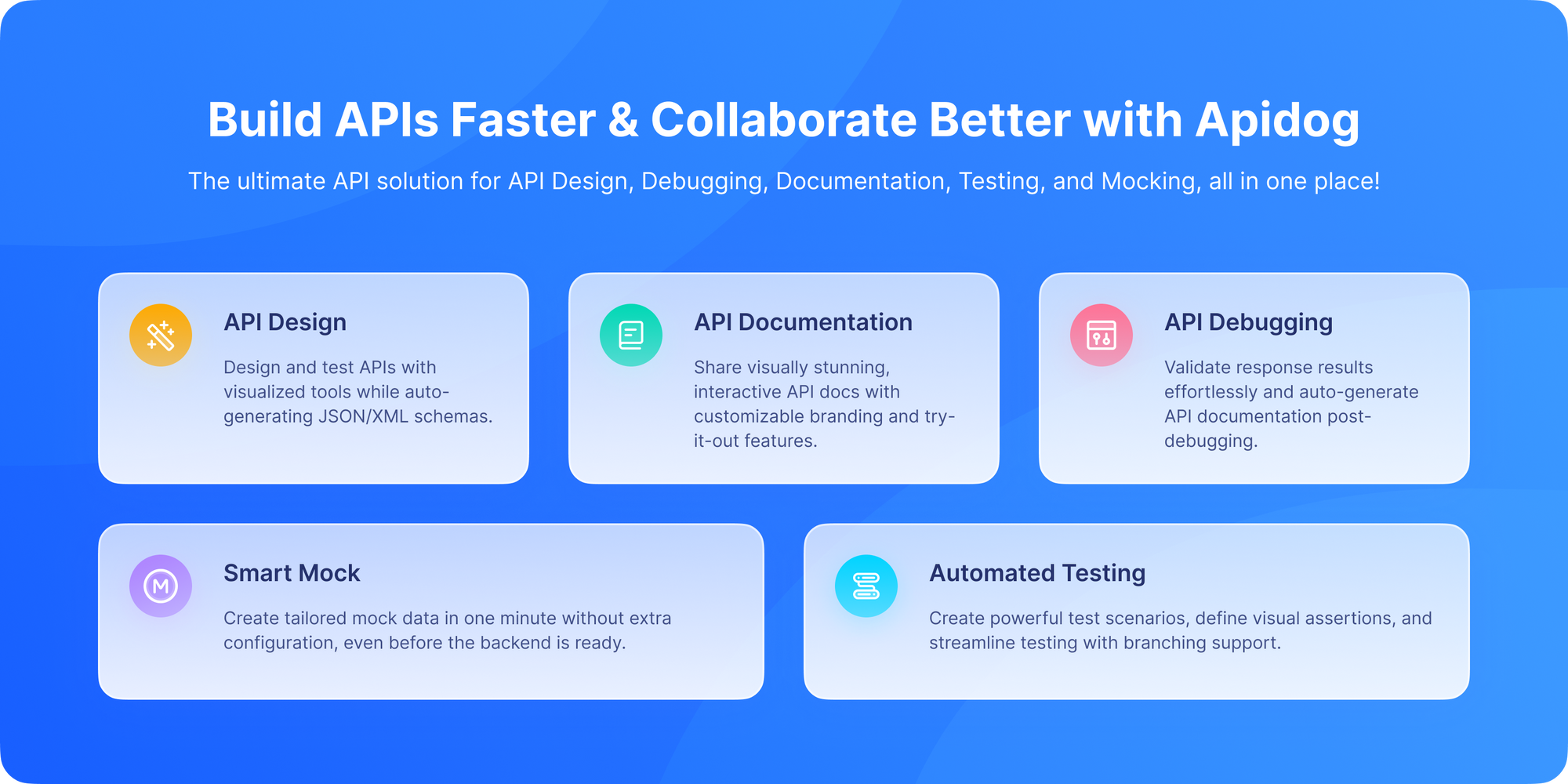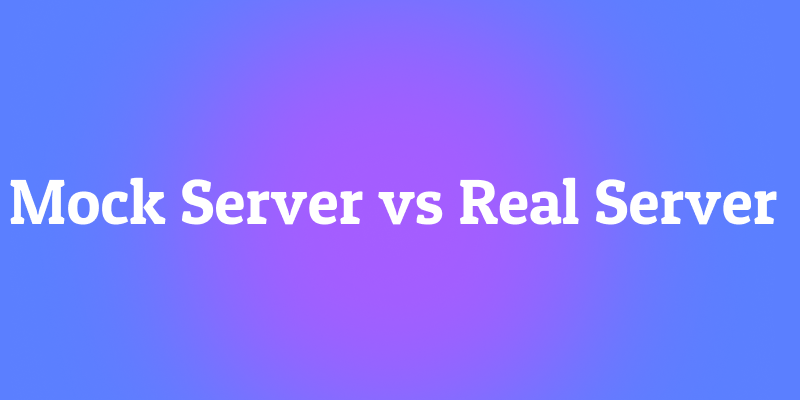If you’ve spent any time building modern applications, you’ve likely heard the terms web services and microservices. They often get tossed around interchangeably—but they’re not the same. In fact, choosing the wrong one for your project can introduce unnecessary complexity or limit your app’s scalability.
From small apps to large enterprise systems, understanding the distinction between web services and microservices is crucial. This guide breaks it down clearly, with real-world examples and practical advice.
Want an integrated, All-in-One platform for your Developer Team to work together with maximum productivity?
Apidog delivers all your demands, and replaces Postman at a much more affordable price!
What are Web Services?
Web services primarily enable interoperable communication between different applications or systems over a network. It allows different applications to communicate and exchange data, even if they are built using different technologies or run on different platforms. When I use web services, I’m thinking of standardized protocols like SOAP (Simple Object Access Protocol) or REST (Representational State Transfer) that allow different platforms (Java, .NET, PHP, mobile apps) to talk to each other. Essentially, web services act as intermediaries, providing access to functionalities and data from one application to another.
Key features of web services:
- Standardized communication: Uses well-defined protocols like SOAP and REST.
- Service-oriented: Web services typically expose coarse-grained functionality like a payment processing service or a weather data provider accessible by many clients.
- Tighter coupling: Often, web services are part of a more monolithic or Service-Oriented Architecture (SOA) environment.
- Centralized management: Web services often run within a centralized software architecture, making them easier to monitor but less agile.
- Protocol bound: They usually use HTTP/HTTPS, SOAP envelopes, XML, or JSON formats.
For example, when working on systems that integrate multiple legacy platforms, web services have reliably handled communication with minimal fuss. This makes them popular in industries with established infrastructures like banking and travel.
Why You Might Choose Web Services in Your Project:
- Legacy system integration: When you need to connect old and new software under compatible communication standards.
- Simplicity: If your application requirements are straightforward and tightly controlled.
- Cross-platform interoperability: When heterogeneous clients and servers need to exchange data.
What are Microservices?
Microservices, on the other hand, are an architectural style where the application is broken down into small, independently deployable services, each handling a specific business capability. I see microservices as the answer to scaling complex cloud-native applications efficiently.
Key traits of microservices:
- Loosely coupled and fine-grained: Each microservice focuses on a single function, like user authentication or order fulfillment.
- Independently deployable and scalable: I can update, test, or scale services without affecting others.
- Technology-agnostic: Teams can build services in different languages or frameworks depending on needs.
- Distributed architecture: Microservices communicate often through lightweight protocols like HTTP/REST, gRPC, or messaging queues.
- Containerization friendly: They fit perfectly with Docker, Kubernetes, and modern CI/CD pipelines.
For instance, in a project where a team needed rapid feature rollout and scalability, microservices allowed different teams to work in parallel and deploy at their own pace without waiting for a centralized release.
When to Choose Microservices:
- Agility & speed: Quickly develop, deploy, and iterate parts of your app.
- Resilience: One failing service doesn’t crash the whole system.
- Technology freedom: Use the right tool or language for each job.
- Scalability: Scale individual services on demand.
- DevOps ready: Easier to automate testing and deployment via CI/CD pipelines.
Web Services vs Microservices: Key Differences
| Aspect | Web Services | Microservices |
|---|---|---|
| Architecture | Centralized, service-oriented (SOA), tightly coupled | Decentralized, distributed, loosely coupled |
| Service Granularity | Coarse-grained: large components or services | Fine-grained: small, focused business capabilities |
| Communication | Standard protocols like SOAP and REST over HTTP | Lightweight protocols: HTTP, REST, gRPC |
| Deployment | Typically deployed as a monolith or fewer services | Independently deployable services |
| Scalability | Scales as entire application or large services | Independently scalable by service |
| Technology Stack | Usually homogeneous, tied to legacy systems | Polyglot, diverse technology stacks |
| Complexity | Simpler, but can get heavyweight with scale | More complex distributed system requiring orchestration |
| Use Cases | Legacy integration, cross-platform interoperability | Cloud-native apps, agile and rapidly evolving systems |
How to Decide between Web Services vs Microservices: A Quick Checklist
Ask yourself:
- How complex is your project?
- Simple: Web services may be enough.
- Complex: Microservices provide more flexibility.
- Do you need independent scaling?
- Yes: Microservices.
- No: Web services might suffice.
- How often do you release updates?
- Frequently: Microservices support fast iteration.
- Occasionally: Web services are simpler to manage.
- Team size & DevOps maturity:
- Small team: Web services are easier to manage.
- DevOps-savvy team: Microservices are a great fit.
- Are you integrating with legacy systems?
- Yes: Web services shine here.
- What’s your timeline and budget?
- Short-term: Web services are faster to ship.
- Long-term: Microservices offer more scalability.
How Apidog Fits Into Both Worlds

Whether you lean towards web services or microservices, one thing stays true: You need to manage your APIs efficiently. That’s where Apidog can be a game-changer.
Why Apidog is a game-changer:
- Unified API management: Design, mock, test, document APIs—all in one place.
- Supports SOAP, REST, GraphQL: Ideal for both web services and microservices.
- Instant API mocking: Let frontend teams build before the backend is ready.
- Team collaboration: Share API specs and workflows easily across roles.

Whether it’s a legacy SOAP service or a distributed set of microservices, Apidog makes API development and testing faster, easier, and less error-prone.
The Hybrid Approach
Truth be told, most of the systems built today are hybrid.
- Some services are small and independent (like payments or notifications)
- Others are monolithic but expose RESTful web services
And that’s totally fine. The important thing is to design APIs cleanly and intentionally and that’s where Apidog becomes essential in your toolkit. It helps to focus on what matters: designing robust APIs that support clean communication, regardless of the architecture underneath.
Final Thoughts
There’s a lot of hype around microservices—and for good reason. They offer agility, scalability, and innovation. But don’t dismiss web services. They’re reliable, proven, and still incredibly useful, especially in regulated or legacy-heavy environments.
In the end, choosing between web services and microservices isn’t just a technical decision—it impacts how fast your team ships, how your app scales, and how easily it can evolve.
Whatever you choose, smart API management is non-negotiable—and that’s where Apidog helps you stay ahead.
Try Apidog for free and see how it can simplify your entire API lifecycle—no matter what architecture you choose.



